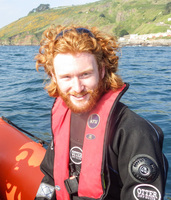Behind the science:
Using light-dependent scleractinia to define the upper boundary of ...
2018, February 15
Posted by Veronica Radice
Fields
Community structure
Connectivity
Ecology
Focusgroups
Overall benthic (groups)
Scleractinia (Hard Corals)
Locations
Honduras - Bay Islands
Platforms
Rebreather
“Coral community transitions across shallow to mesophotic reef zonations: how to define MCEs?”
What was the most challenging aspect of your study (can be anything from field, lab to analysis)?
One of the most frustrating challenges on a day-to-day basis involved attaching transects tapes to the reef for benthic video capture. Our dive protocols combined stereo-video (SVS) assessment of reef fish communities with these benthic assessments. The SVS diver would swim at a constant rate over the reef for 50m, while the benthic diver attached the transect tape. The benthic diver had to remain close enough to signal 50m had been recorded. Unfortunately the swim speed couldn’t change when flat sections of reef became walls with few points for attachment! A wider reaching challenge was organising the limited number of cylinders, dive pairs, and research equipment to maximise dive time from a single boat trip.
What was the most memorable moment in undertaking this study?
During a survey dive at 55m at a north shore dive site I had my first encounter with an animal bigger than myself in the sea. While attaching my transect tape to the reef wall, I turned to look to the open ocean. A large hammerhead shark, the first I’d seen, was slowly swimming past at a distance of about 10m away. I stopped work to enjoy that moment.
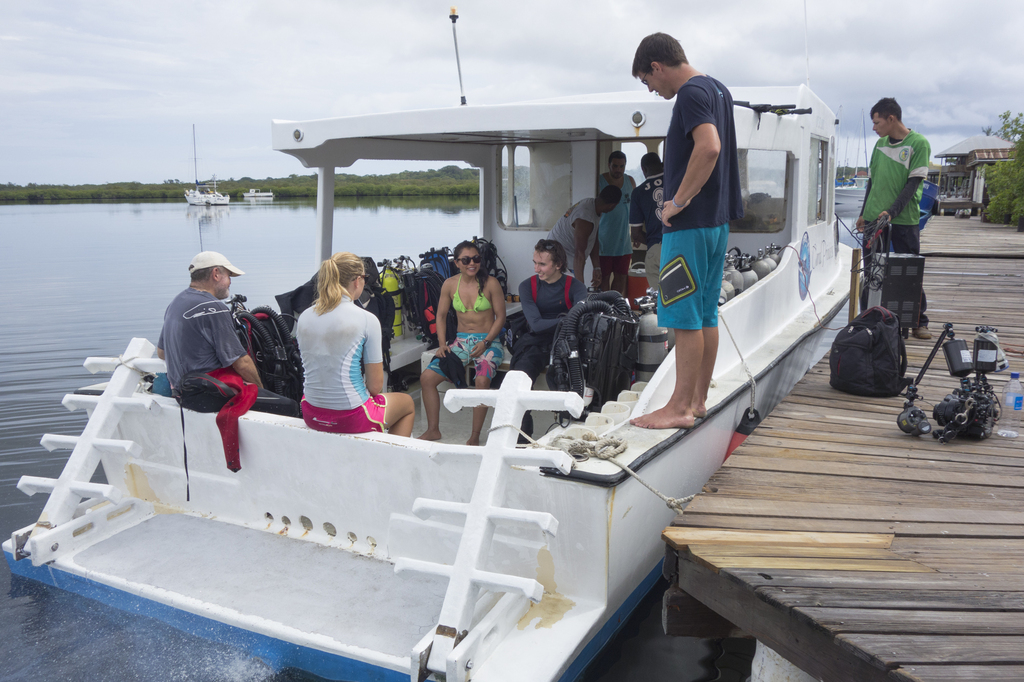 The Thinking Deep team ready aboard the Coral Princess for a North Shore research dive (Coral View Research Centre)
(C) Ally McDowell
The Thinking Deep team ready aboard the Coral Princess for a North Shore research dive (Coral View Research Centre)
(C) Ally McDowell
What was your favorite research site in this study and why?
The Maze on the north shore of Utila offered some of the most varied diving during the expedition. In the shallows a network of trenches 10m deep, lined with coral, give the dive site its name. A wall interrupted by shelves extends well below 100m, with Agaricia beds coincident with the shelves. As the dive site faces into open ocean it provided us with the best chance of seeing rays, turtles, and other larger animals while waiting on decompression. The journey back to base always carried the chance of dolphins and whale sharks, although the latter never materialised for me.
Other than your co-authors, with whom would you like to share credit for this work?
We wouldn’t have been able to do this work without the help of other members of the Thinking Deep team while on expedition: Edd Stockdale, Anna East, Erika Gress, Alicia Hendrix, Ally McDowell, and Luke Shepherd. Just as important are those who helped while on fieldwork with logistics from the Bay Islands Conservation Association, the Coral View Research Centre, and ‘G’ for kit care. Local knowledge is invaluable when it comes to keeping things running!
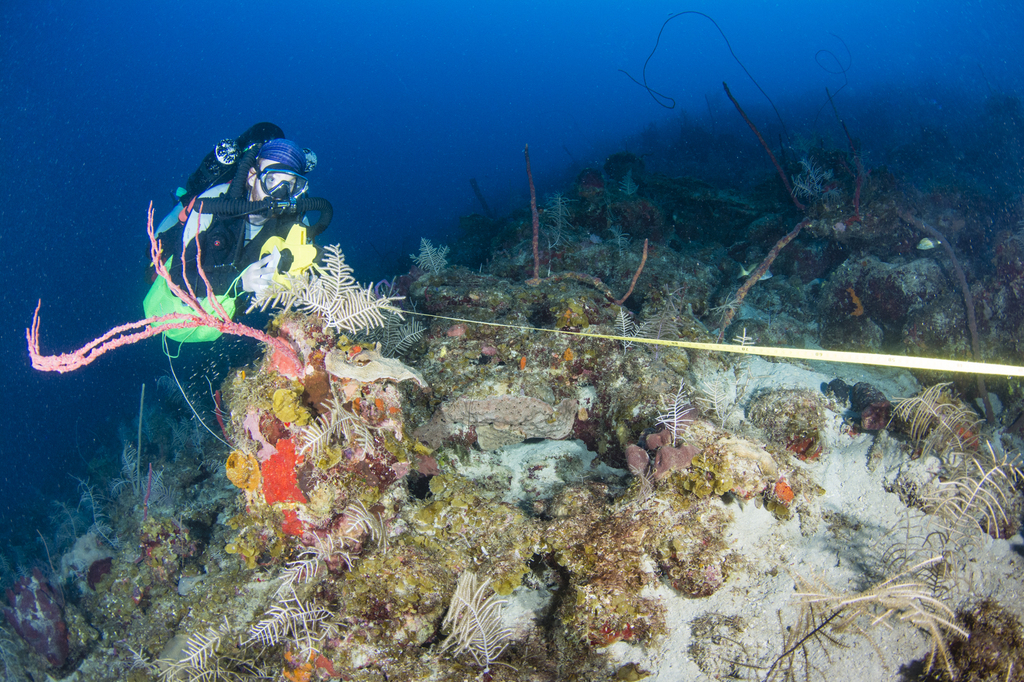 Jack Laverick Reeling in a transect tape after a Benthic survey at 'Rageddy Cay' dive site.
(C) Ally McDowell
Jack Laverick Reeling in a transect tape after a Benthic survey at 'Rageddy Cay' dive site.
(C) Ally McDowell
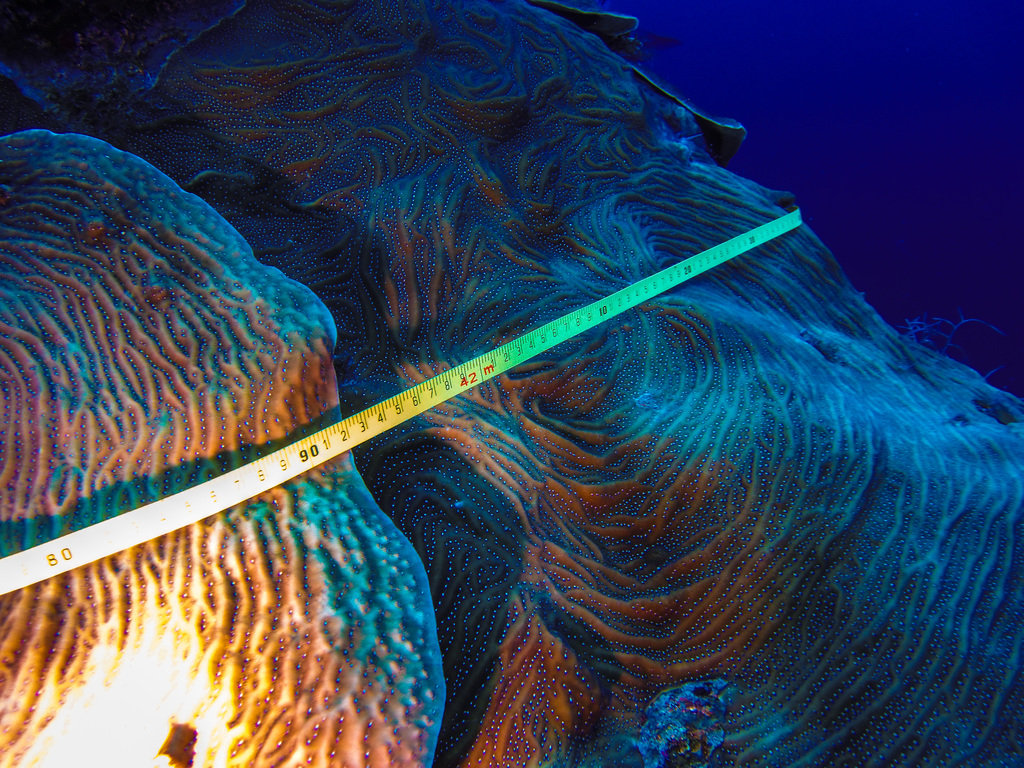 A large Agaricia colony, typical of a mesophotic reef, on a transect at 'The Maze' dive site.
(C) Jack Laverick
[CC BY-NC 4.0]
A large Agaricia colony, typical of a mesophotic reef, on a transect at 'The Maze' dive site.
(C) Jack Laverick
[CC BY-NC 4.0]
Any important lessons learned (through mistakes, experience or methodological advances)?
My main lesson was to resist overcommitting. With a small team of divers, one week off for an ear infection can have a significant impact on the number of dives completed and videos collected. Make sure to have a goal for a completed dataset which leaves plenty of time clear at the end of an expedition, rather than pushing for a stretch goal from the start and risking gaps.
Can we expect any follow-up on this work?
We have plans to link this Scleractinia dataset to other taxa to compare zonation patterns on Utila more broadly. In the future it would be great to perform this analysis on a number of other spatially detailed datasets across the Caribbean. By contrasting our results with other locations we may get a better understanding of the groups of organisms which help us to recognise mesophotic reefs. Check out the video link showing the change in reef structure from a shallow to mesophotic reef and loss of structure at the reef end.
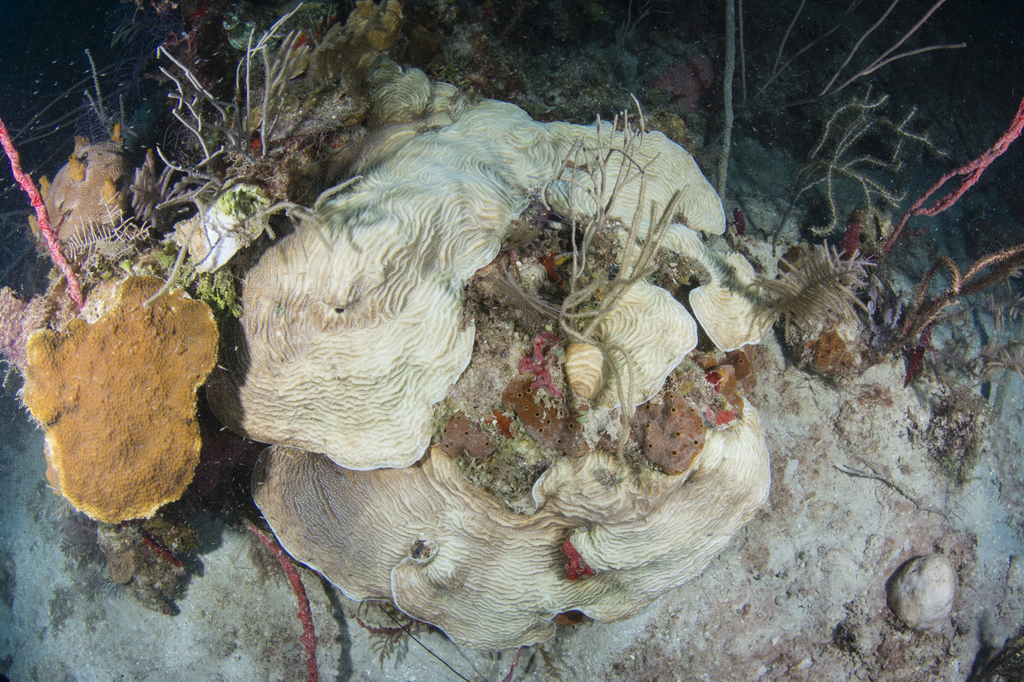 During our survey period mesophotic colonies (Agaricia) began to pale and bleach in September. See more of our published research for of a discussion!
(C) Ally McDowell
During our survey period mesophotic colonies (Agaricia) began to pale and bleach in September. See more of our published research for of a discussion!
(C) Ally McDowell
 A video link (http://vimeo.com/252513184) showing the change in reef structure from a shallow to mesophotic reef and loss of structure at the reef end.
(C) Jack Laverick & Dominic Andradi-Brown
[CC BY-NC 4.0]
A video link (http://vimeo.com/252513184) showing the change in reef structure from a shallow to mesophotic reef and loss of structure at the reef end.
(C) Jack Laverick & Dominic Andradi-Brown
[CC BY-NC 4.0]
Featured article:
|
|
Using light-dependent scleractinia to define the upper boundary of mesophotic coral ecosystems on the reefs of Utila, Honduras | article Laverick JH, Andradi-Brown DA, Rogers AD (2017) PLoS ONE 12:e0183075 |

|
